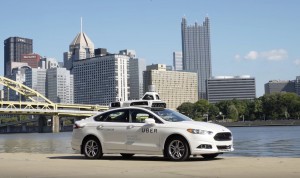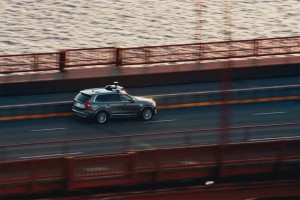
Uber is ready to resume testing its autonomous vehicles in Pittsburgh, but several changes have been instituted to ensure improved safety.
Uber is reviving its self-driving vehicle test program in Pittsburgh, after a nearly four-month hiatus implemented in the wake of the pedestrian death in Arizona.
Company officials said there are and will be significant changes to the program to help avoid another fatality or other issues. First, there will be two employees in every vehicle. The “mission specialists” will occupy the two front seats.
Additionally, the vehicles will be driven by a person instead of by the machine. This is to help the system “learn” more about a variety of situations drivers may encounter ranging from the everyday to once-in-a-lifetime. The second “specialist’s” role it to document anything out of the ordinary. No word on when the vehicles will drive themselves again.
“After the tragedy in Tempe, we launched a top-to-bottom review of our self-driving program with a focus on safety,” Eric Meyhofer, head of Uber Advanced Technologies Group, wrote in a blog published on Medium.com.
(Mercedes, Bosch team to offer self-driving car service. Click Here for the story.)
“Today, we are taking a first step towards bringing our self-driving vehicles back to public roadways in Pittsburgh.”
In addition to adding a second employee – the Tempe investigation revealed that the driver was looking at her phone instead of the road ahead. By the time she looked up, there was less than a second to react – Uber’s new vehicles have a few other changes.
The vehicles engage Real-time Driver Monitoring: All of Uber’s self-driving vehicles will have a driver-monitoring system installed to help ensure Mission Specialists are remaining attentive behind the wheel. If the system detects inattentive behavior, an audio alert will cue the Mission Specialist.
The built-in collision avoidance system is enabled – it was not at the time of the Tempe crash – and will remain enabled during manual driving. The system activates emergency braking under certain conditions, such as a sudden change in traffic ahead of the vehicle, and provides imminent collision warnings.
All of Uber’s self-driving cars come equipped with a front tablet, designed in accordance with NHTSA’s Human Factors Design Guidance For Driver-Vehicle Interfaces, where turn-by-turn navigation and vehicle status information is displayed.
(Click Here for the latest on the fatal Uber crash.)
Additionally, all Mission Specialists have completed new training modules specifically focused on safe manual driving. These modules include dedicated time in defensive and distracted driving courses, as well as improved test track situational awareness drills.
All Mission Specialists undergo rigorous training prior to operating a self-driving vehicle, and are expected to uphold high levels of performance, and the company enacted a fatigue management program including mandated switches between left- and right-seat operations throughout the duration of their shift.
The manually driven vehicles provide Uber with benefits, including:
- Virtual Simulation Scenario Generation: Manual driving allows us to see in real-time different scenarios that our self-driving cars will encounter on the road. We then recreate those scenarios in a virtual world, and on the test track, to improve overall system performance under similar conditions.
- Accurate HD Map Development: High quality HD maps power safe and reliable self-driving systems. Maintaining accurate maps is a continuous process, and more manual data collection means we can keep these maps up-to-date.
All of these efforts reflect a push to get testing back up and running with governmental approvals, but the company seems to get that it needs one more item: trust.
“We recognize our responsibility to contribute to this future, and the essential role that safety plays as we move forward,” Meyerhofer wrote in the blog.
(To see more about why three quarters of Americans are “too afraid” to ride in self-driving vehicle, Click Here.)
“We also recognize that transparency is critical to building trust, which is why we’ll continue to share our progress as we work towards getting back on the road in self-driving mode, as well as publish a Voluntary Safety Self-Assessment.”


